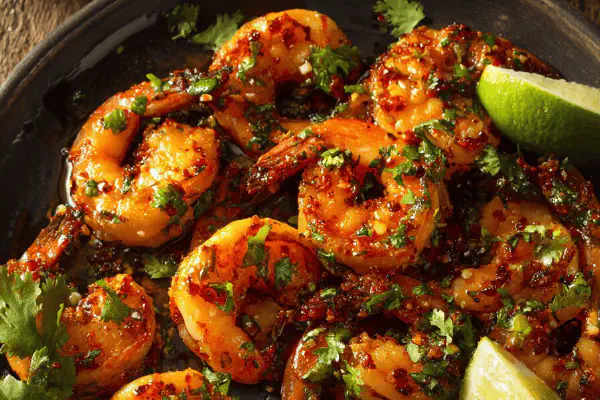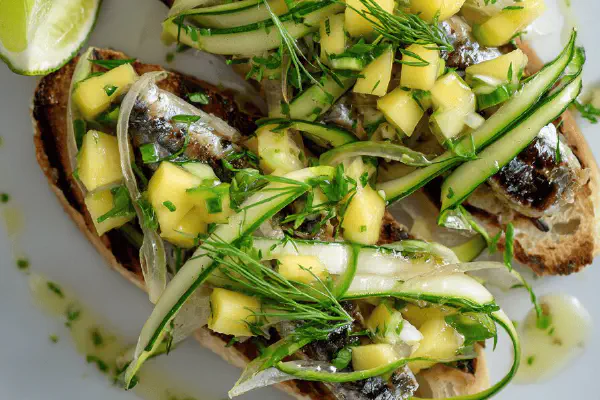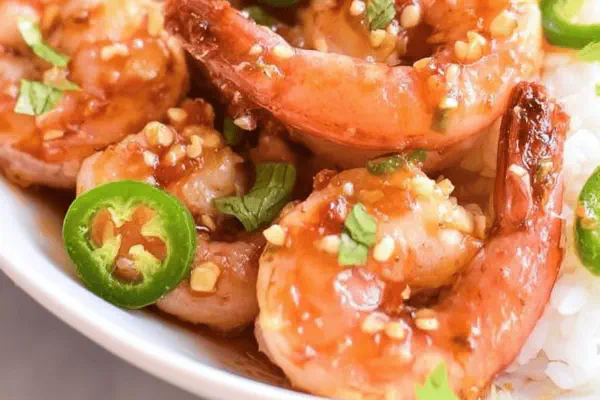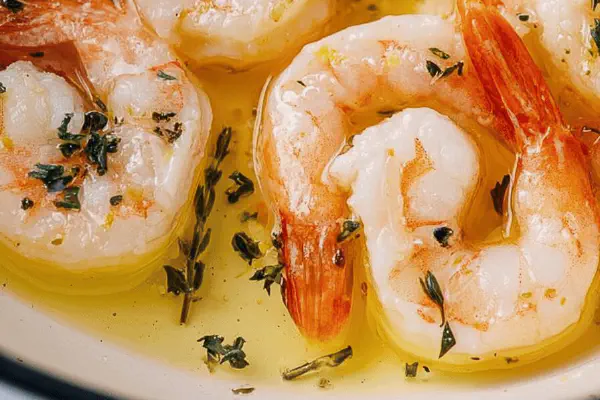Haddock Apricot Glaze
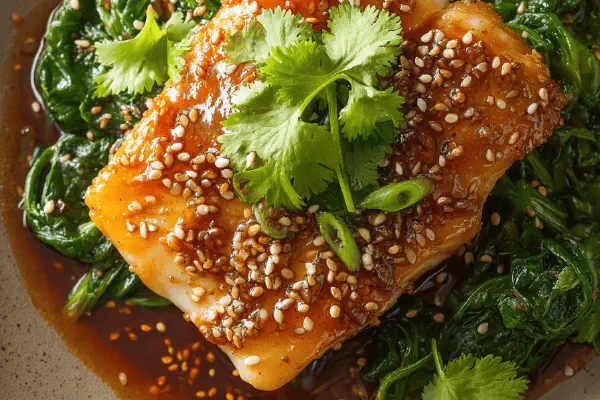
By Emma
Certified Culinary Professional
Ingredients
- 600 g tender haddock fillets skinless cut into 4 pieces
- 40 ml extra virgin olive oil
- 150 ml low sodium vegetable broth or chicken broth
- 50 ml homemade apricot preserves or peach jam
- 50 ml tamari soy sauce
- 1 liter fresh baby spinach washed and tough stems removed
- Salt coarse and freshly cracked black pepper
- Toasted black sesame seeds sprinkle generously
- Fresh cilantro leaves for garnish optional
About the ingredients
Method
- Preheat large nonstick skillet over medium-high heat. Pour in oil, shimmer visible, not smoking. Lay haddock pieces away from you to avoid splatter, you want golden crust, 3 minutes per side. Fish becomes opaque, flakes easily under fork pressure. Season while hot with salt and pepper. Remove and tent with foil to keep juices locked.
- Pour broth into same pan; scrape browned bits off bottom with wooden spoon for deep flavor. Add apricot jam and tamari, reduce heat to medium-low, watch bubbling sauce thicken slightly, about 3 minutes. Should coat back of spoon but remain fluid.
- Off heat, toss baby spinach into sauce in skillet. Wilt spinach by gentle stirring, residual heat is enough — avoid overcooking which dulls color and nutty flavor.
- Serve fish draped with two thirds of the sauce. The rest holds the luxuriant spinach beneath tender fish. Garnish with black sesame seeds for crunch, sprinkle bright cilantro if you fancy a punch of herbal freshness.
- Side idea: fluffy jasmine or basmati rice steamed just before serving, breaks apart easily and captures sauce perfectly.
Cooking tips
Chef's notes
- 💡 Fish searing needs hot pan. Oil must shimmer, not smoke. Lay fillets gently, away from you to reduce splatter. Fish crust forms in 3 mins per side, thickness matters a lot. Crowded pan means lost heat, dull crust. Remove fish, tent with foil keeps juices locked while sauce simmers. Timing key; flaky fish signals done, opaque color too.
- 💡 Sauce reduction—watch bubbles shift from roiling boil to slow simmer. Jam and tamari merge better at medium-low. If jam too set, loosen with splash water before mixing. Sauce should coat spoon back but stay fluid, not syrupy solid. Scorching ruins balance—stir often, low heat. Residual heat wilts spinach just right, stir gently. Avoid overcooking; dulls color and bites.
- 💡 Spinach prep matters. Tough stems pull out or chop finely for smoother texture. Use freshest leaves; older ones bitter, tough. Toss in sauce just off heat to keep brightness. Pressing spinach with spoon packs it well on plate—no floating steam pockets later. Sesame seeds toast fast; too long burns bitterness. Flip quickly, smell nutty aroma tells all. Black or white seeds okay, black gives visual
- 💡 Substitutions: Vegetable broth swaps chicken easy for vegetarian diners. Tamari soy preferred if wheat soy causes stomach issues; flavor slightly different, less salty. Apricot jam’s best runny texture; store-bought jams can dry sauce; loosen with water or gentle heat. Sesame seeds add crunch not flavor weight, so skip if allergy. Cilantro optional, some hate flavor—chop finely to integrate or skip entirely.
- 💡 Keep sauce hands-on, watch bubbling, stir regularly. Keep pan heat balanced; too hot burns sugar in jam, too low stalls reduction. Fish thickness matters for timing, thin fillets overcook fast. If pan too crowded, do batches to avoid steaming fish. Sauce clings better when fish rested briefly; juices redistribute under foil. Serve spinach under fish to keep vibrant color, not soggy on top. Season immediately after sear to lock flavor.
Common questions
How to know when haddock is done?
Fish turns opaque. Flakes easily under fork pressure but not falling apart. 3 minutes per side is general guide, varies with thickness. Hot pan crucial for crust; if fillet sticks, pan too cold or crowded. Rest fish under foil while finishing sauce.
Can I use regular soy sauce?
Tamari preferred for gluten-free, less harsh. Regular soy works but watch salt level. Adds more sodium, might alter sauce balance. Adjust apricot preserves sweetness or add splash water to loosen if sauce thickens too fast. Try both once to see preference.
What if sauce too thick or sticky?
Splash broth or water to loosen. Reduce heat to low immediately after jam mixes in. Stir frequently to prevent burning sugar. Sauce should coat spoon but remain fluid, not paste. If burns, start fresh sauce; burnt sugar taste lingers bad.
Can leftovers be stored?
Store fish and sauce separately if possible. Refrigerate up to 2 days max; fish loses texture quickly. Spinach wilts more when reheated; reheat sauce gently, avoid boiling. Freeze sauce only, seafood texture deteriorates. Reheat slowly on low heat. Avoid microwave for spinach, tends to get soggy fast.
